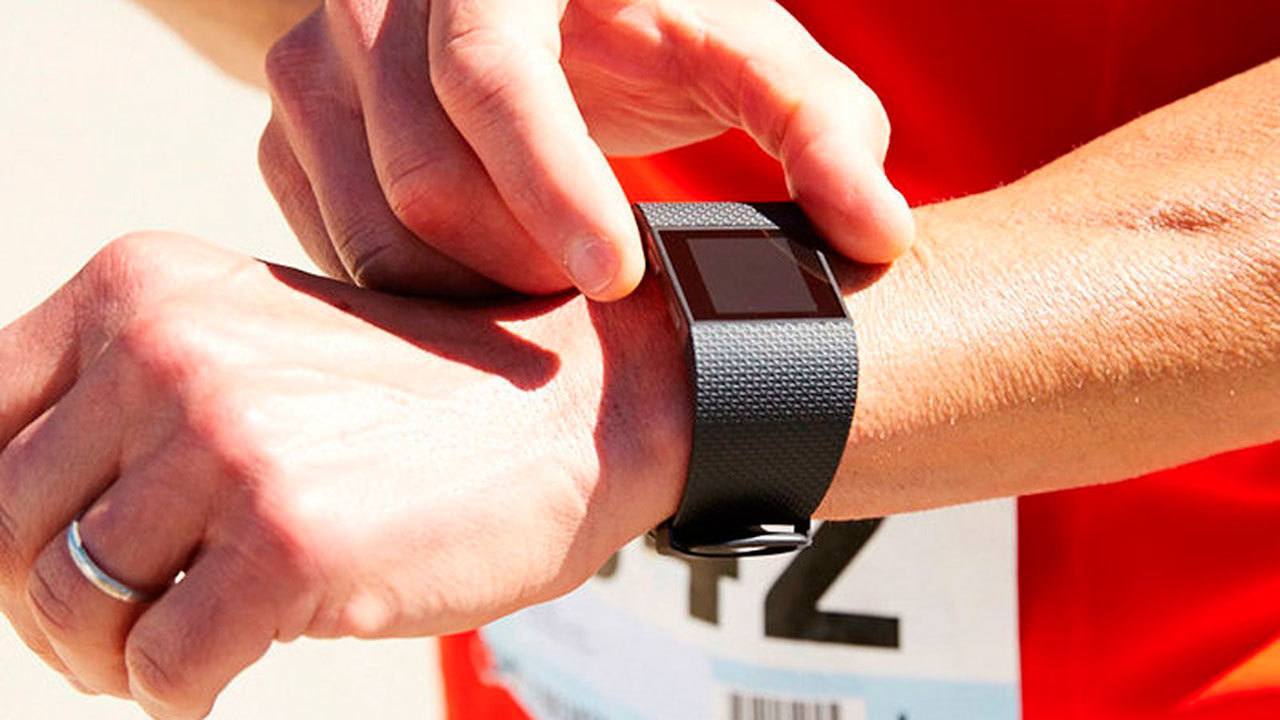Those sleek wristbands that look like a cross between a bracelet and a watch, and record each step you take: Maybe you’ve seen them around, maybe you have one of your own or maybe you’ve just heard the hype.
Fitness trackers – wearable computers that track daily fitness-related metrics such as distance walked – are touted as key tools for losing weight, improving fitness and boosting overall wellness.
Most fitness trackers are worn on the wrist, usually syncing to a smartphone or computer for long-term data tracking. Some devices also monitor calorie consumption, heart rate and even quality of sleep in addition to activity metrics.
Fitness trackers have surged in popularity over the past few years, with the worldwide wearable device market growing 172 percent in 2015, according to the International Data Corporation.
But do the devices really work? A recent study published in the Journal of the American Medical Association found that a simple diet and exercise plan is a more effective weight loss strategy than using Fitbit and Jawbone devices.
To get to the bottom of this question, we caught up with Lisa Lovejoy, MEd, RD, CSSD, CD, MultiCare Sports and Wellness Dietician.
In your experience, what are the true benefits of fitness trackers?
Overall, I think fitness trackers are wonderful. They’re great tools for people to use in making lifestyle changes because they allow you to objectively assess what you’re actually doing.
They can help you transition to a healthier lifestyle by raising your awareness of your own habits and also giving you an external reward for activity.
For example, sometimes people are more or less fit than they think they are. Some of my clients are very surprised to find out how sedentary they really are. They go to the gym every day, but then sit for the remaining 23 hours, so they’re not actually moving as much as they think.
Fitness trackers give you feedback in real time towards the end of your day. If some of my clients are almost at 10,000 steps after dinner, they might walk around the house until they hit that mark. Or if they’re at 7,000 steps after work, they might choose to go to the gym or walk the dog instead of going to a movie.
There’s also a lot of social support online. When you’re looking at your own info, you can team up with people who you do or don’t know to trade notes and have competitions.
What are the main limitations of fitness trackers?
A fitness tracker is a gadget, so it’s naturally going to have some limitations. The biggest one I see is that it might overestimate or underestimate your activity.
In general people seem to think that fitness trackers overestimate activity. If the goal is to increase activity and you think you’re doing more than you actually are, it might take you longer to reach your goals. For example, when I wear mine to sporting events, I get a lot of credit for stepping because I clap a lot, even though I haven’t left my seat. It’s just a motion sensor.
But with the models that don’t have a heart rate tracker, if you’re doing something like resistance training that doesn’t involve a lot of stepping, you’re not capturing the energy expended during that activity even though you’re burning energy. So these might underestimate your activity.
How do you recommend that people use fitness trackers?
If you’re just starting out, I would recommend that you first go about your normal routine. Then look at those numbers, assess your current activity level, and from there set a realistic goal – just a little bit outside of what’s normal for you. For example, if you’re walking on average 3,000 steps a day, set your goal at 3,500 steps.
Fitness trackers often come with a suggestion of 10,000 steps a day, but for someone who’s only walking 2,000 steps on average, 10,000 is an unrealistic goal. People who try to increase their activity too fast tend to get frustrated and quit using the trackers. But they can be really helpful in helping you set a realistic goal, and from there moving consistently towards a larger goal.
If you’re looking for body composition changes, the ideal way to use a fitness tracker is to pair it with an online food tracker, and that way you can match up both sides of the equation.
What would you caution people against when using a fitness tracker?
The most important thing is to be sure you’re setting your own goals. The fitness tracker gives you objective feedback, either positive or negative, and from there you can use that information to make changes and set your own goals. Just wearing the device itself isn’t going to do much — it does take some effort.
MultiCare Health System is a not-for-profit health care organization with more than 11,000 employees and a comprehensive network of services throughout Pierce, South King, Thurston and Kitsap counties.



